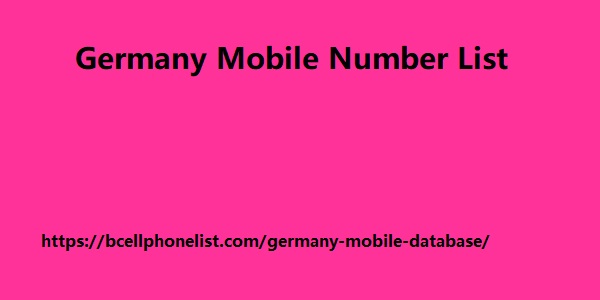Post by account_disabled on Mar 10, 2024 22:56:51 GMT -5
Suppliers, but a single plaintiff or client, that is, a single person is the one who buys the entire production of a certain good . This usually occurs when the client requires specific goods or niche products, such as, for example, the case of special suits for risky activities, supplies for armed forces or sales of vehicle spare parts. In this case, the product or service offered must be of excellent quality and must meet all the demands of its exclusive client, since otherwise, the commercial relationship with the company could end. E-book cover you will also like our guide to contract management in the sales process 2.-excess supply in relation to demand: also known as oversupply, this is when there is an excessive amount of a product, so the customer has the possibility of choosing between different options, opting for the one that satisfies all their needs. Needs (price, quality, delivery time, guarantees). However, the traditional purchasing model is based on the fact that the buyer will be left with the alternative that delivers a better product, with the best service and at the best price. 3.- the threat of substitutes: as there are many similar products that satisfy the same need, the phenomenon is generated that the demand and price of the products becomes more elastic. That is, it will depend on how competitors manage prices so that the rest of the companies that manufacture similar products must adapt and not be at a disadvantage. This is another clear example when the negotiating power of clients increases.
-the customer buys in large volumes: when the customer buys huge quantities of a product, it becomes an essential piece for the survival and operational continuity of the supplier company, reducing its negotiating capacity with the customer. Three Germany Mobile Number List more are added to this list of factors: when the differentiation of the supplier's products is minimal; if the client is well informed and has absolute knowledge of the market and its trends; and finally, when the client can produce the same product, acquiring great power when negotiating. Example of customer bargaining power an everyday example of customer bargaining power occurs in the airline industry. Currently, there are many applications and websites where it is possible to compare ticket prices and opt for the cheapest one. In this sense, for most customers, the price factor is more important than other aspects, such as comfort, guarantees or travel time. This means that brand loyalty is becoming less and less, prioritizing cost reduction when traveling.

It is for this reason that some brands offer benefit programs or points so that their customers become frequent travelers, an excellent customer renewal practice . In what situations does the bargaining power of customers exceed that of suppliers? Understanding what negotiation is in conflict resolution and knowing the saying that “the customer is always right” is essential to retaining them and keeping them satisfied. But, it is also important to establish limits, since granting too much bargaining power to customers is not optimal for the profitability of companies. There are several key factors that increase the customer's bargaining power: degree of customer concentration: this means that the fewer customers there are (the greater the concentration), the greater their power will be with respect to the company. One recommendation is that the company establishes a cooperation agreement through outsourcing with the client, through the signing of a long-term agreement, with the objective that the client has access to advantages that would not otherwise be possible, thus guaranteeing way the stability of the company.
